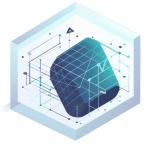Linear Equations
Are you a 9th grader who is about to embark upon the exciting world of algebra? Are you wondering if it’s normal to be taking algebra 1 as a freshman? Do you want to know what kind of math you should know before diving into linear functions? Well, look no further! This guide will provide you with all the information you need to unlock the linear functions chapter in algebra 1.
First things first, let’s address the question of whether it’s okay to take algebra 1 in 9th grade. The answer is yes! Many schools offer algebra 1 as a freshman course, and it’s completely normal. In fact, some students may even take algebra 1 in middle school and move on to geometry or algebra 2 in 9th grade. So, don’t worry if you’re starting algebra 1 as a freshman – you’re right on track!
Now, let’s talk about what kind of math a 9th grader should know before starting algebra 1. In general, you should have a good understanding of basic arithmetic operations (addition, subtraction, multiplication, and division) and be comfortable working with fractions, decimals, and percentages. You should also have a good grasp of basic algebraic concepts, such as solving equations with one variable and graphing linear equations. If you’re unsure about any of these concepts, it’s a good idea to review them before starting algebra 1.
Now, onto the main event – the linear functions chapter! Chapter 2 of most algebra 1 textbooks covers linear functions, which are functions that have a constant rate of change. In other words, as the input (usually represented by x) increases by a certain amount, the output (usually represented by y) increases by a constant amount. Linear functions are some of the most important functions in algebra, and they have many real-world applications.
So, what will you learn in the linear functions chapter? Here are some of the key topics:
- Slope: This is the rate of change in a linear function. You’ll learn how to calculate slope using the rise over run formula, and you’ll learn how to interpret slope in real-world contexts.
- Intercepts: These are the points where a line crosses the x-axis or y-axis. You’ll learn how to find x- and y-intercepts, and you’ll learn how to use them to graph linear functions.
- Equations: You’ll learn how to write equations for linear functions in slope-intercept form (y = mx + b) and point-slope form (y – y1 = m(x – x1)).
- Graphing: You’ll learn how to graph linear functions by plotting points, finding the intercepts, and using the slope to find additional points.
As you can see, the linear functions chapter is packed full of important concepts and skills. But don’t worry – with practice and patience, you’ll master these concepts in no time!
In conclusion, if you’re a 9th grader about to start algebra 1, don’t worry – you’re in the right place! Before diving into the linear functions chapter, make sure you have a good understanding of basic arithmetic and algebraic concepts. Once you’re ready, the linear functions chapter will introduce you to some of the most important functions in algebra. So, get ready to unlock the world of linear functions – it’s going to be a fun and exciting journey!
